Caring for indoor plants and keeping them alive during the long, cold, dark, and dry winter months can be very challenging.
That’s because most of your houseplants go into a state of dormancy or hibernation during the winter. So they don’t need as much water, fertilizer, pruning, or repotting as they do in the warmer months.
Because of this, you need to change your care routine to make sure they don’t start dying on you. In this post I’ll show you how to have the best success growing your houseplants in winter.
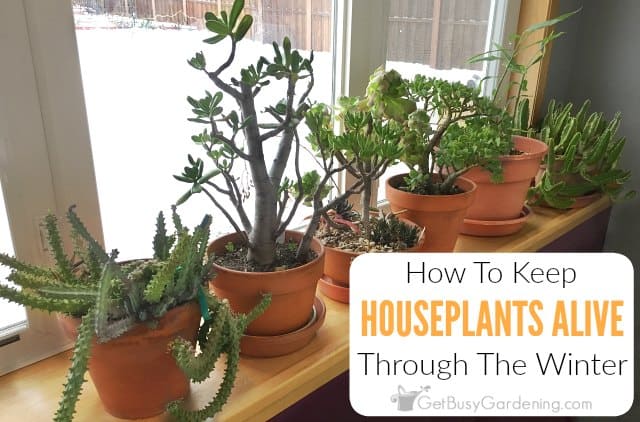
Caring For Houseplants In Winter
The biggest challenges people face with keeping their houseplants healthy through the winter are maintaining the correct amount of water, humidity, light, and temperatures, and dealing with bugs.
It’s also very important to understand that fertilizing, pruning, and repotting at the wrong times can put a lot of stress on a plant, or result in weak and spindly growth.
So below I will discuss the proper winter care for your indoor plants in detail, and tell you exactly how to adapt your routine to accommodate their changing needs.
Related Post: How To Overwinter Plants: The Complete Guide
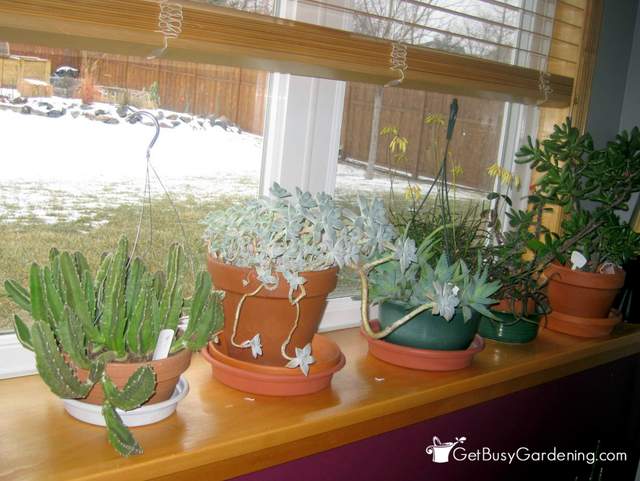
Water
Since they are in a resting state, most houseplants don’t need as much moisture during the winter months. Because of this, overwatering is the #1 problem that people tend to have.
So it’s very important to slow down on watering your indoor plants. Rather than doing it on a set schedule, you should always check to make sure they need it before giving them more.
Stick your finger one inch into the soil. If it feels moist, don’t water it. To make it even easier to get the balance right, I recommend getting an inexpensive moisture gauge probe to help you.
Related Post: How To Melt Snow For Watering Houseplants
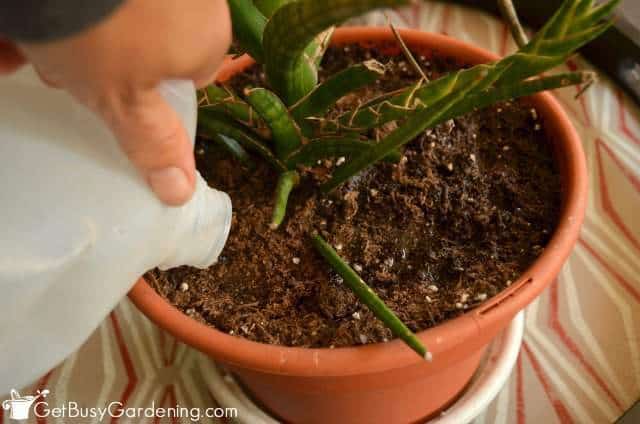
Humidity
Heating your house sucks the humidity right out of the air and makes it extremely dry, which is not very good for tropical plants. Low humidity can also dry out the soil faster, so you should check it more often.
You can get an indoor humidity monitor to keep track of how dry it is in your home. Here are a few easy ways to increase the humidity around your most sensitive babies.
- Add moisture to the air – Run a humidifier nearby or put your houseplants in a sunny kitchen or a bathroom. They will love the extra moisture in the air.
- Group plants together – Grouping plants together can help to raise the humidity level around them. You can simply move them closer together, or take it one step further and put smaller plants into the same pot.
- Add a pebble tray – Putting a pebble tray filled with water under the pot is another great method to try. But be careful to never allow the pot to soak in the water, and refresh it regularly so it doesn’t become stagnant.
- Use a mini indoor greenhouse – I like to grow my fussiest plants together in my mini indoor greenhouse through the winter. That way I can be sure it’s never too dry for them, and I can easily hang lights in there too.
Keeping Indoor Plants Warm In Winter
The ideal indoor temperature for houseplants is 60-75°F, so you should grow them in a warm room.
Another way to keep them warm in winter is to run a space heater in the room. Just be sure to place the heater several feet away from your plants to prevent damage.
Also, houseplants don’t like drafts of any kind, especially very cold or hot blasts of air. So keep them away from doors or drafty windows, and heat sources like a fireplace or vent at all times.
Light
Since most indoor plants grow slower in the winter, they’re usually more tolerant of the naturally lower light levels. However, some will quickly become leggy if they don’t get enough.
If any of yours start to reach for the nearest window, or develop weak and spindly growth, that means it’s not getting enough light.
In that case, you’ll either need to move it closer to a sunny window or add a grow light. I like to plug my lights into an outlet timer to give my plants the perfect amount every day.
Related Post: The Best Indoor Houseplant Supplies, Tools & Equipment
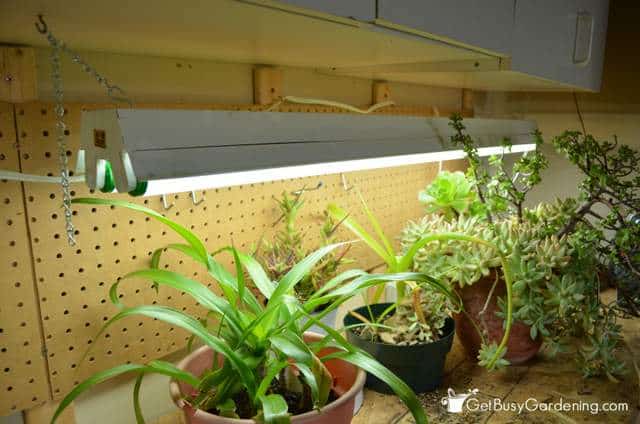
Fertilizing Indoor Plants During Winter
Since most houseplants go dormant during the winter, you should not fertilize them. Feeding them can cause thin and scraggly growth, which is prone to bug attacks and sunburn.
It’s best to stop fertilizing them early in the fall, and then start again with a weak dose of a general purpose liquid in the spring.
Related Post: The Ultimate Guide For Growing Indoor Plants
Repotting
Don’t repot indoor plants during the winter unless it’s absolutely necessary. It puts a lot of stress on them and it can trigger new growth, which tends to be weak and leggy.
However, if the soil dries out almost as soon as you water it, or a plant is suffering because it is severely pot-bound, then you can repot it. Learn more about when and how to repot your houseplants here.
Controlling Bugs
Winter is the prime breeding season for houseplant pests, and it’s the most common time for heavy infestations.
It’s very important to regularly inspect your plants for signs of bugs. The earlier you find them, the easier they are to control.
A good habit to get into is to check the leaves every time you water. If you find any bugs, start treating them immediately.
An insecticidal soap is the best for washing the leaves and killing bugs on contact (I make my own using 1 tsp of mild liquid soap to 1 liter of water).
I also recommend investing in some organic neem oil, which works to not only kill them, but it has a residual effect to prevent them from coming back. Learn how to get rid of houseplant pests here.
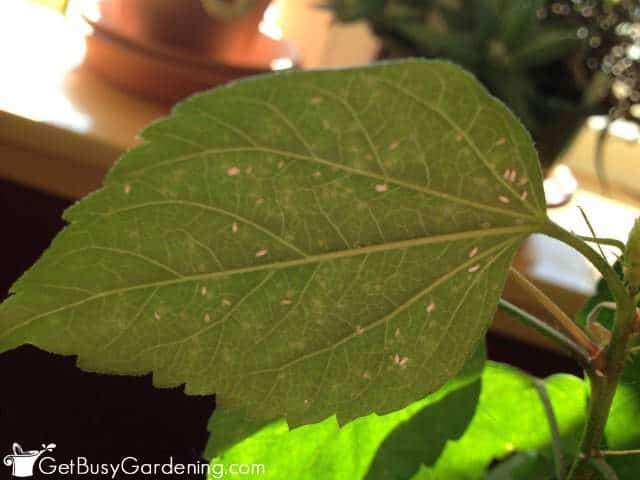
Pruning
Another thing to avoid during the winter is pruning your houseplants. You can remove dead leaves, stems, or branches at any time as you need to.
But pinching or trimming will stimulate new growth, which usually ends up being thin and unhealthy, and further stresses the plant.
FAQs
Most common indoor plants go into a dormant or semi-dormant state during the winter. However, there are a few types that grow and flower best during the colder months.
As a general rule, you should not fertilizer your indoor plants during the winter. Doing so can cause weak, spindly, or leggy growth that is prone to sunburn and bug infestations.
Yes. Most indoor houseplants need less water in the winter than they do during the warmer months when they’re actively growing.
You should not repot your houseplants in the winter unless it’s absolutely necessary. It’s best to wait until spring, otherwise it can trigger weak and scraggly growth and stress the plant.
If you want to learn all there is to know about maintaining healthy indoor plants, then you need my Houseplant Care eBook. It will show you everything you need to know about how to keep every plant in your home thriving. Download your copy now!
More Indoor Plant Care Posts
Share your tips for how to grow indoor plants in winter in the comments section below.
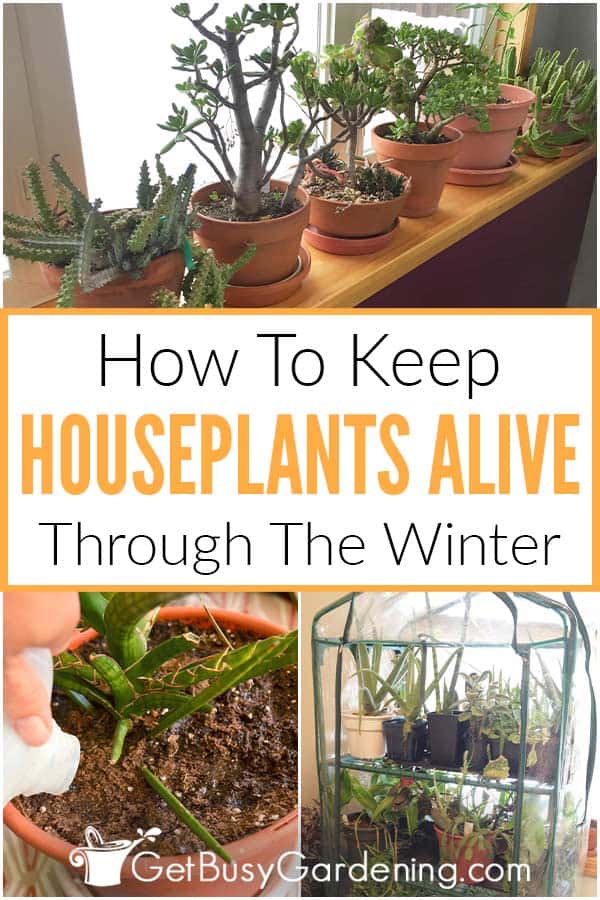

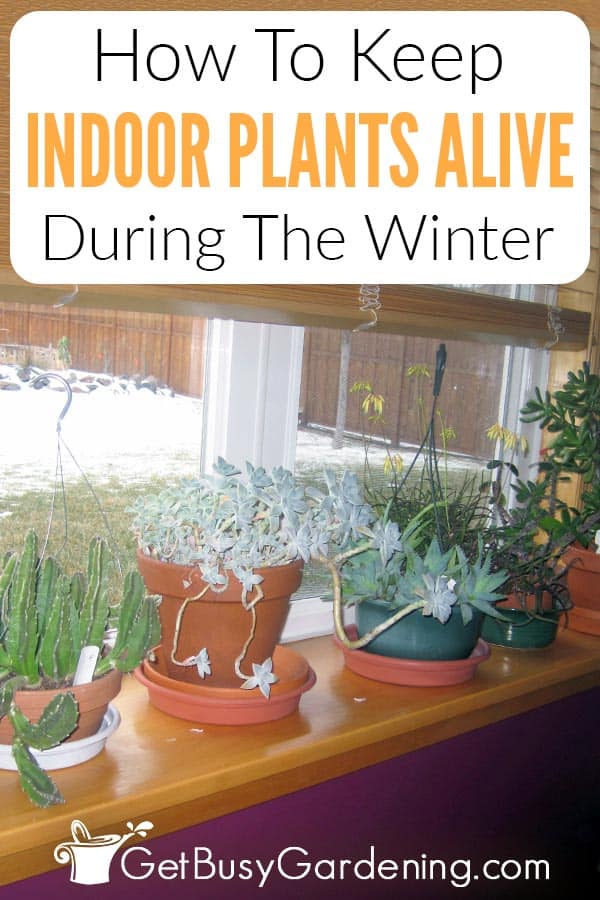
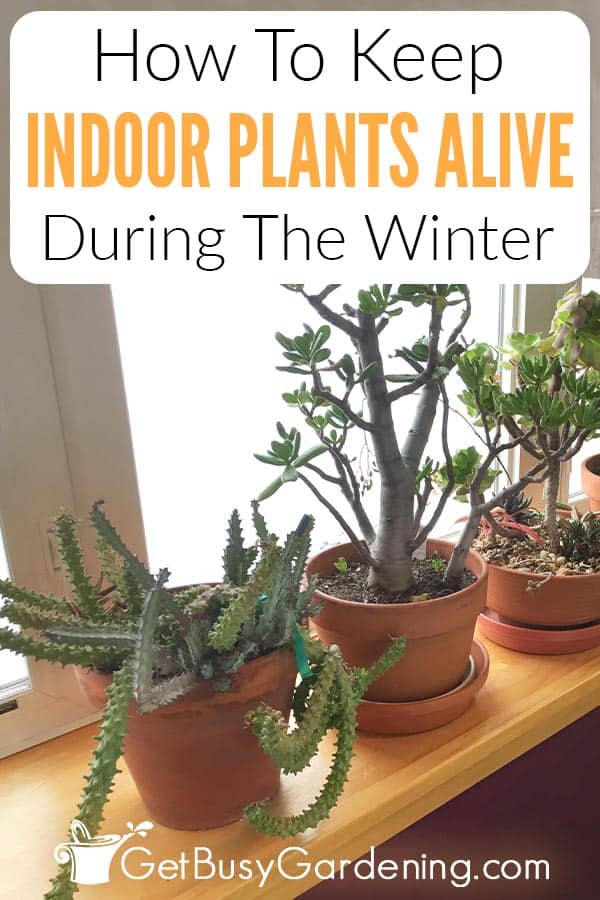
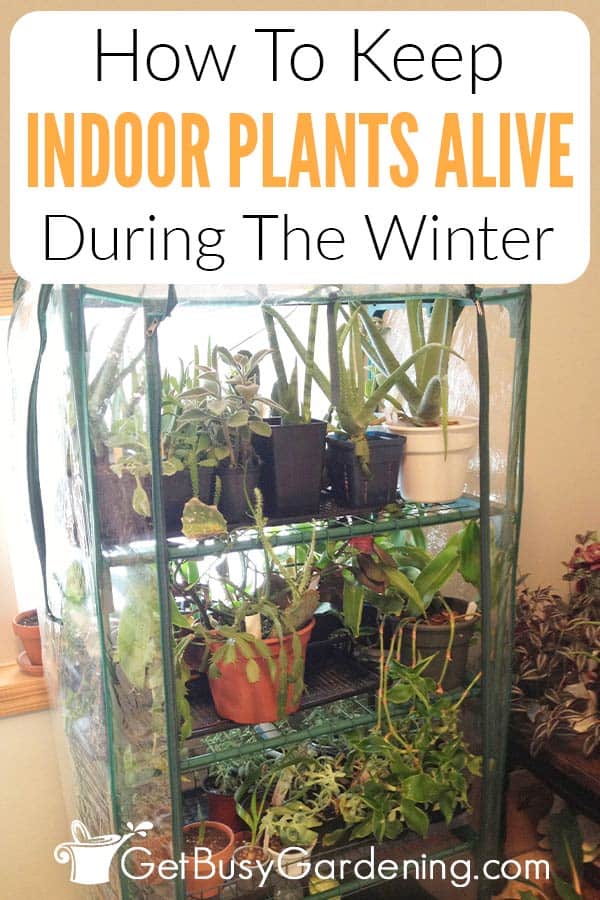
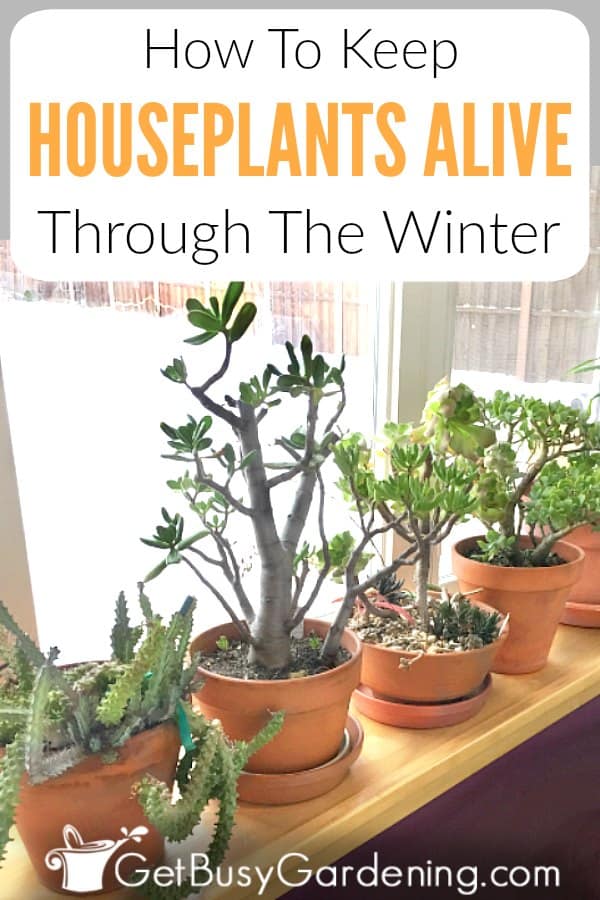

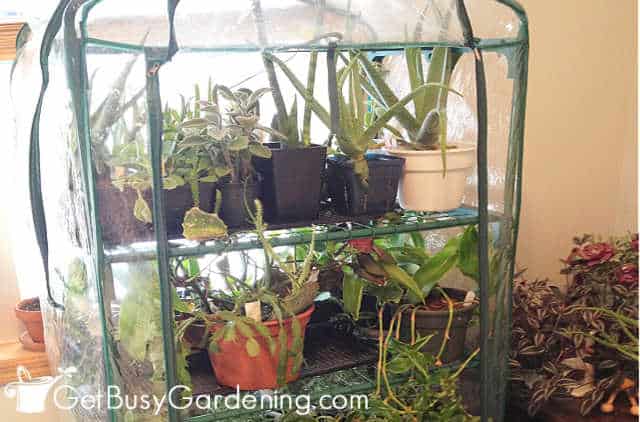


Leave a Reply